In this article, researchers evaluated seasonal patterns of soil moisture (SM) and diurnal variation in incident sunlight (photosynthetic photon flux density [PPFD]) in a single-axis-tracking agrivoltaic system established in a formerly managed semiarid C3 grassland in Colorado. Their goals were to (1) quantify dynamic patterns of PPFD and SM within a 1.2 MW photovoltaic array in a perennial grassland, and (2) determine how aboveground net primary production (ANPP) and photosynthetic parameters responded to the resource patterns created by the photovoltaic array. Investigators found relatively weak relationships between SM and ANPP despite significant spatial variability in both. Further, there was little evidence that light-saturated photosynthesis and quantum yield of CO2 assimilation differed for plants growing directly beneath (lowest PPFD) versus between (highest PPFD) PV panels. Overall, the AV system established in this semiarid managed grassland did not alter patterns of ANPP in ways predictable from past studies of controls of ANPP in open grasslands.
Tag Archive for: soil health
Emma W. Kampherbeek, Laura E. Webb, Beth J. Reynolds, Seeta A. Sistla,
Marc R. Horney, Raimon Ripoll-Bosch, Jason P. Dubowsky, Zachary D. McFarlane
A study led by Emma Kampherbeek (Wageningen University & Research, the Netherlands) highlights multiple benefits of coupling solar energy production to sheep grazing in rangeland systems. This project investigated how sheep use solar arrays as a forage site and the impacts of solar array presence on forage quality in a California Central Coast site with a Mediterranean climate. Sheep with access to solar panels graze more than when they are on nearby native rangeland without an array. This increased foraging behavior is likely driven by a combination of the protection that the array provides the sheep from weather conditions, which increases grazing time, as well as increased protein content and digestibility of forage with the array footprint.
For this November teatime, we were excited to have Tyler Swanson and Jessica Guarino from the University of Illinois join us to discuss the latest on agrivoltaic regulations (check out their discussion of zoning, for example), solar grazing contracts, the economic considerations around grazing, and best practices from the targeted grazing industry that solar graziers can use for insight when developing contractual agreements. Much of the discussion revolved around issues concerning farmland becoming solar sites and the local conflicts that can create.
We had a very interesting discussion during the Q&A, where graziers dug into issues surrounding scaling up solar grazing, expanding agrivoltaics into crop production, and optimizing land-use for grazing at solar sites.
This Teatime was hosted by Kevin Richardson of the American Solar Grazing Association and Dr. Stacie Peterson of the AgriSolar Clearinghouse.
In November, Sabrina Portner from the University of Minnesota presented on her exciting research into growing 14 different forage and grain crops at three different solar sites. The forages and grain were grown in the context of feeding them to the research farm dairy herd. Sabrina and her team looked at how different shade levels affected each crop’s biomass production, as well as the nutritional value of the crops.
This research addresses an important issue: as land availability pressures increase, especially with the expansion of solar in rural areas, the sustainable intensification of agriculture and the need for combining solar sites with agricultural production become more imperative. Their research works towards both goals of food production and clean energy production while providing flexible economic opportunities to farmers.
This Teatime was hosted by Kevin Richardson of the American Solar Grazing Association and Victorian Smart of the AgriSolar Clearinghouse.
Farmers in France are Beginning to Combine Solar Panels and Crops
“In the Haute-Saône region, in the northeastern part of the country, an experiment is being conducted by solar-energy company TSE. It is hoping to find out whether solar energy can be generated without hindering large-scale cereal crops. Previous attempts to experiment with agrivoltaics have been through smaller-scale projects. But, keen to see if it can thrive on an industrial level, 5,500 solar panels are being spread over this farm in the commune town of Amance by TSE.” – Euronews
Solar Grazing Event Helps Kentucky Students Learn about Agrisolar
“The event was made possible through a partnership between the Kentucky Sheep and Goat Development Office, LG&E/KU, University of Kentucky, Ohio State University, and solar development company Lightsource bp. Students learned about solar technology, seed mix establishment and meeting nutritional needs in solar grazing. Additionally, the release said students were able to tour the LG&E/KU E.W. Brown Generating Station’s solar array in Mercer County.” – The News Enterprise
Cornell Researcher Hosts EarthTalks Agrisolar Series
“Niko Kochendoerfer, a postdoctoral fellow in animal sciences at Cornell University, will deliver the talk ‘Effect of sheep stocking rate on ecosystem parameters in ground-mounted solar arrays’ at 4 p.m. on Monday, Nov. 14. The talk, which is free and open to the public, takes place in 112 Walker Building on the University Park campus and via Zoom.” – PSU
In partnership with Lightsource BP, Texas Solar Sheep grazes over 1,800 sheep on a solar site in Deport, Texas. These sheep are grazed in groups of 50 to 75, 250 to –270, and even 500, making Texas Solar Sheep one of the largest Agrisolar grazing operations in the United States.
All 1,800 sheep are grazed and managed on one solar site, which has 18 individual pastures. The sheep are grazed year-round on the same site. The area gets maybe one snowfall a year, which is not a huge issue for them, as the solar panels provide good protection from elements for the sheep. The farm may buy one stockpile of hay for the winter if they feel it is necessary as a precaution, but stockpiling food is not a great concern on this operation.
No mowing duties are required on this site, thanks to responsibly managed, rotational grazing of the sheep. There are many weeds that sheep will not eat, so they must be manually removed. After some time, if those weeds can be removed from the site, then there is no need for mowing or the use of gas or diesel-operated maintenance equipment. Graziers mowed this site four times in 2021 and have not mowed at all in 2022 as of the end of September.
J.R. Howard, owner of Texas Solar Sheep, says it is important for new graziers to know that the client of this operation is the solar site, and the grazier is providing a service to replace mowing on the site. The sheep-grazing service has been shown to provide significant benefits to the solar site, including enhancing the health of the turf, reducing runoff from rainfall, and providing crucial shade relief to both the grasses and the sheep during drought periods like those seen in 2021.
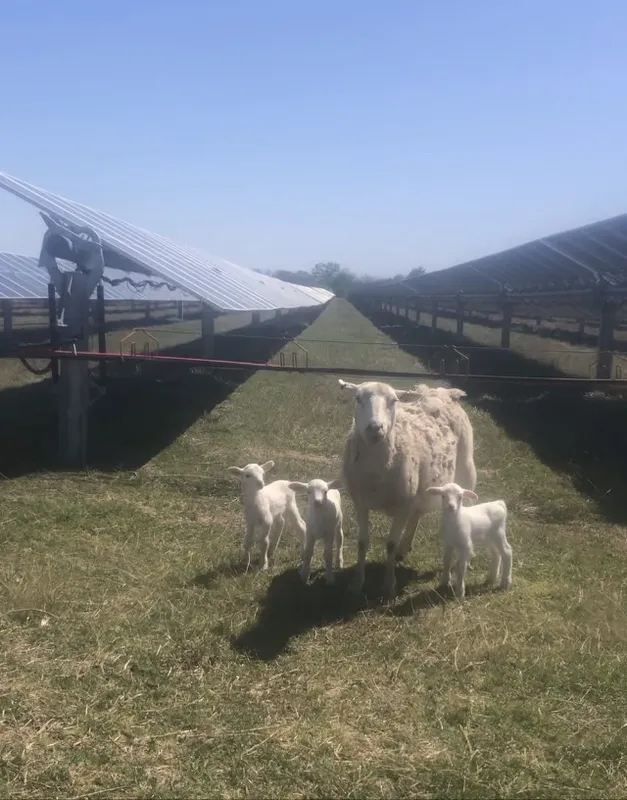
Healthy Turf Prevents Runoff
The site has realized benefits from preventing rainfall runoff as a result of developing healthy turf. There was hardly any runoff after 3 inches of rainfall, due to the enhancement in turf quality from responsible grazing management, according to Howard. Healthy turf is a result of not overgrazing individual areas and managing proper sheep rotation. The sheep are not allowed to eat to the bare ground, resulting in what is known as a healthy turf that allows the land to capture and hold the water when it rains, resulting in less runoff and other associated issues. Howard said the land is back to looking like “normal land” and not “golf courses.”
Shade Relief for Grasses and Sheep
During the drought of 2021, the solar panels provided crucial shading for the grasses and the sheep. The grass between the panels that did not have shade did not do as well as the grasses that were getting shade from the panels. “The shade support really helped a lot,” Howard said.
Sheep typically feed in the morning and then hang out in the shade during the day, which the panels provide plenty of. Unlike goats and cattle, sheep do not damage equipment by rubbing against it, climbing on it, or chewing on wires as some goats do. The sheep can be comfortable under the panels during the day with little, if any, threat of damage to equipment.
Rotational Fencing
One challenge that the operation has dealt with is constantly rotating the sheeps’ pasture, which needs to be consistent and on schedule. Limiting grazing to smaller areas more often, as opposed to one large area less frequently, is ideal. However, this approach requires fencing that must be moved regularly. The operation requires “cross fences” to break large blocks of land into smaller pastures. Moving fences is one of the most consistent tasks of the operation, but it is manageable.
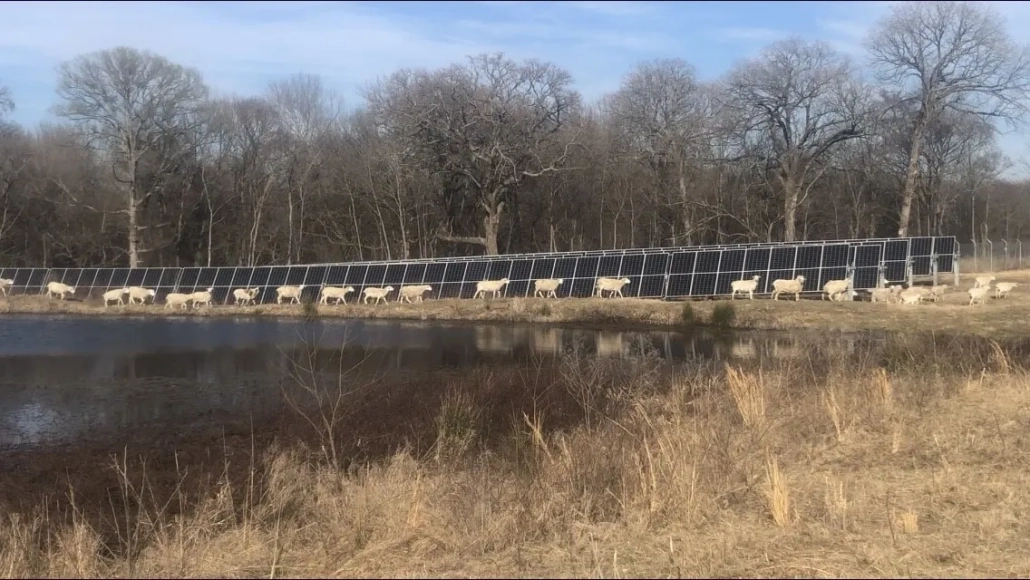
Breeding for Agrisolar Conditions
The solar company allows the sheep owners to breed lambs when they want. The sheep live on the solar site from birth until they are sold or pass away. The sheep are also checked by a veterinarian at various times during their life cycle on the site. Owners breed sheep on site, to “get the ewe they want,” Howard said.
This selective breeding process is an attempt to breed a sheep genetically superior in parasite resistance than previous generations of sheep. These sheep would be specifically resistant to parasites during the lamb phaseand the lactating ewe phases of their life, which are often when farmers struggle with parasites infecting their sheep. Due to the selective breeding process on this site, the sheep will be more resilient to the conditions they experience in Texas, which includes hot temperatures and prolonged, wet conditions.
Although Dorper sheep, which originated in South Africa, are genetically capable of handling hot temperatures, they are being breed with Katahdin and St. Croix to enhance their genetic capabilities further—making them the most ideal sheep for agrisolar operations in these climate conditions.
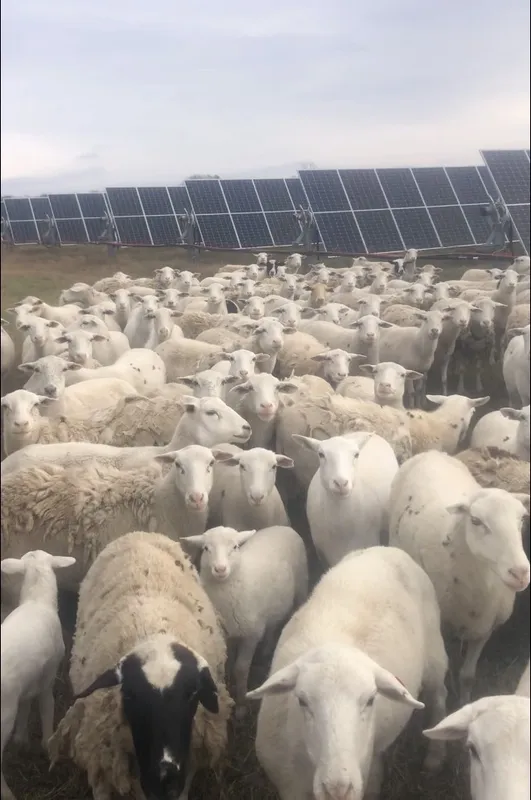
What New Graziers Should Know
New graziers should know that this is not a grazing lease with the solar company but, rather, a grazing service business. As a service business, people with sheep will have a customer that they are providing a service to. This requires graziers to spend more time on-site where they can correct issues quickly. If sheep get out of the fenced paddocks, graziers can get them back to their assigned areas quickly. Sometimes sheep pass away and need to be removed as quickly as possible. Being on-site allows for that. If sheep are sick, they can be attended to quickly. The grazier can also ensure that sheep have constant access to water.
The solar company also benefits from having Texas Solar Sheep staff on-site regularly. “We are out there more than the solar folks, so we see issues for them, too. It has been an extra set of eyes for them on the solar equipment, so that has been a significant help for them, as well. If they see downed panels, damaged wiring, or even fires, they can report it quickly and get it taken care of,” said Howard. “There is a public eye on this stuff, so we want to make sure we are doing it right.”
Howard stated that grazing is the future of utility-scale solar. It is important that the first few big sites get it right. With great partners like Lighthouse BP, Texas Solar Sheep has been able to scale up its operation, and is planning for larger sites for the future, meaning more sheep on more solar sites.
Howard said the family farm had about 300 ewes and having the opportunity to partner with Lightsource BP has allowed them to have extra land to graze and scale up their operation. “We’re not a big landowner, and this allowed us to scale up a lot, to 1,800 ewes.”
Australian Researchers Develop Solar Panels Optimized for Agrisolar
“University of New South Wales researchers have teamed up with Tindo Solar to develop a line of semi-transparent modules, specialized for agrivoltaic cropping, which will use nanoparticles tuned to capture different parts of the light spectrum. ‘There is evidence you don’t need the full spectrum and some plants will work even better if you provide them with only part of the spectrum,’ project lead and UNSW Associate Professor Ziv Hameiri tells PV Magazine Australia. Crucially, he says, the project will also open a line between farmers, solar researchers and industry, creating the potential for mutual benefits.” – PV Magazine
Agrisolar Operations Show That Solar Does Not Compete with Farmland
“In short, Agrivoltaics is a rapidly growing branch of the energy transition. It is being applied to all manner of crops across the world. All kinds of benefits are emerging, with China even using it to reverse desertification. Not only is it expanding clean energy production, it is providing a vital second income stream for farmers. Banning it would cut off a really important opportunity for Britain’s farmers, at a time when rural poverty is a real issue.” – Green Peace
Oregon State Develops 5-Acre Agrisolar Project
“Oregon State University has started construction on a $1.5 million research project to optimize dual-use, co-developed land hosting solar photovoltaic arrays and agriculture. The five-acre Solar Harvest project is located at Oregon State’s North Willamette Research and Extension Center in Aurora, Oregon, 20 miles south of Portland. The 326-kW project is the result of a partnership between Oregon State and the Oregon Clean Power Cooperative, which developed the solar array and financed the construction of the solar array.” – Solar Power World
Dr. John Walker (TAMU AgriLife Research) and Haley Gosnell (who runs joined us to discuss the extensive practical targeted grazing knowledge he and his team have collected from graziers across the U.S. and Canada. John is a range livestock and wildlife specialist who focuses on vegetation and diet selection for grazing ruminants.
From 2021-2022, he and his team conducted a survey of over a 100 targeted grazing serviced providers in the U.S. and Canada, as well as parallel focus groups, on lessons learned from their experiences with targeted grazing. The survey covered a number of different landscapes (from rural to urban and private to public) and variations in vegetation, grazing scales (small to large), and grazing season lengths. This was part of an effort to update the American Sheep Industry’s 2006 Targeted Grazing Handbook.
John discussed the results of the survey and its insights into targeted grazing.
Hosts: Kevin Richardson (ASGA), Caroline Owens (ASGA Board Member), and Carl Berntsen from AgriSolar Clearinghouse / NCAT
This Teatime is part of a series co-hosted and sponsored by the AgriSolar Clearing House team. We thank them for their generous support and for adding their expertise to the Teatime events!
About the Speakers:
Dr. John Walker, Professor, Range Specialist: I am a Professor and Resident Director of Research at the Texas A&M AgriLife Research & Extension Center in San Angelo, Texas. My responsibilities include providing leadership to a multi-disciplinary team of six scientists that develop new technologies for increasing the efficiency and sustainability of range livestock and wildlife production. My research interest relates to developing new technologies for modifying diet selection of grazing ruminants. It has long been known that livestock grazing affects the botanical composition of vegetation communities. By avoiding some plant species and preferring others, livestock provide a competitive advantage to plants that are avoided, which allows them to increase and often dominate a site. Grazing systems were developed to help overcome this adverse effect of selective grazing on rangeland composition. I am interested in directly modifying the grazing habits of livestock through selective breeding, nutritional interventions and learning. In conjunction with this research, I have developed near-infrared spectroscopy calibrations that use fecal spectra to predict the botanical composition of diets.
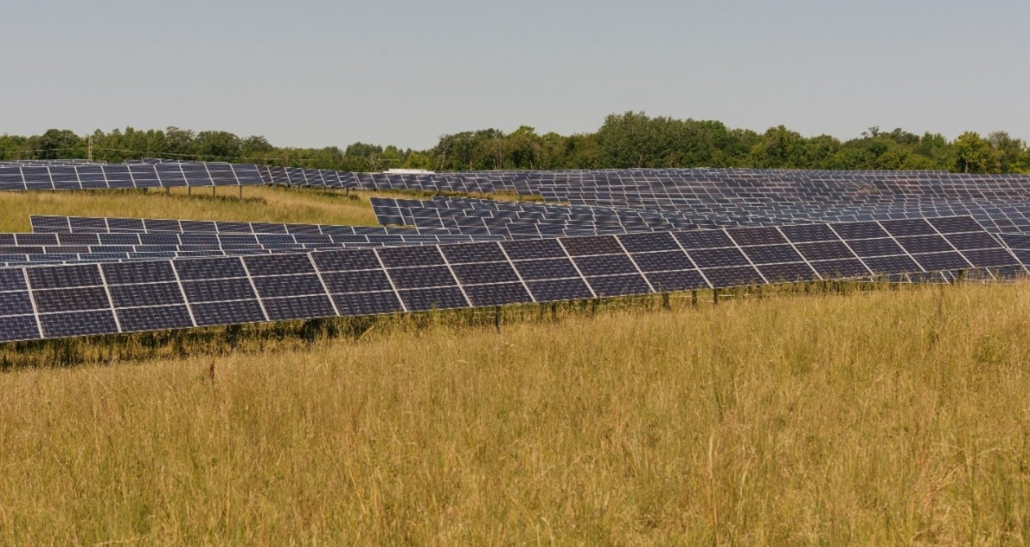
Lake Pulaski is an agrivoltaic solar power plant site developed by Enel Green Power that spans over 68.2 acres in Buffalo, Minnesota. This site is one of 16 developed for the Aurora Distributed Solar LLC project in 2017, supporting pollinators, grazing, and an apiary. The layout consists of 34,668 panels at 315 watts each, spanning over 500 individual arrays. The total plant system size is 10.92MW (dc). Each panel has a SolTech single, horizontal axis tracker to follow the sun path and optimize production. This tracker was chosen over the more standard axis-pole trackers due to their ability to allow curves in the array installation to accommodate the rolling landscape. The developers strived to install the system with minimal land disturbance to maintain the landscape and reduce excavation, thus allowing the panels to move with the rolling hills. Panel height was design to be approximately 2.5 fee from the ground at the maximum tilt angle of 45o to allow grazing sheep to pass under without harm to sheep or panels. This sets the total height of each array at a maximum of 10 feet.
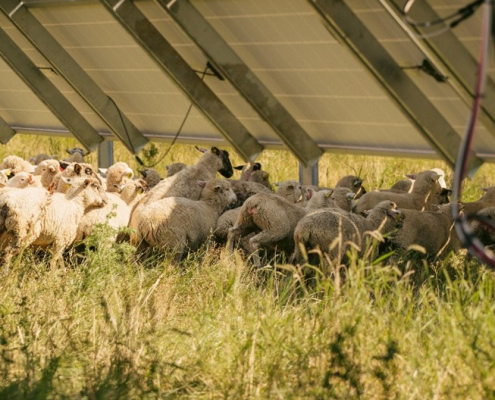
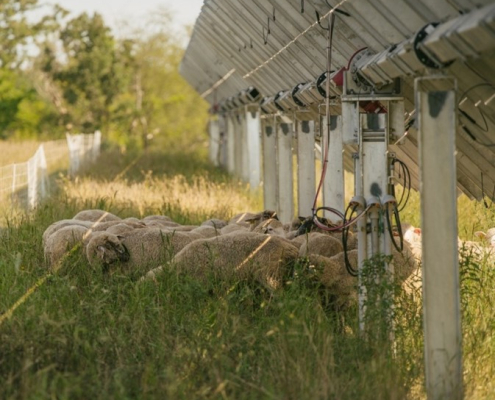
The landscape is grazed once a year near the end of September for one month to reduce the need for mowing, save on labor and gas, and maintain a healthy soil chemistry. Graduate students at Temple University in Pennsylvania are conducting studies on the benefits of grazing, such as soil composition, a reduced mowing, and a reduction in spraying for weeds. Eight of the 16 Aurora project sites are grazed for research purposes. Occasional mowing is required if the area has a high-growth year. Minnesota Native Landscapes (MNL) developed the original native seed profile to help promote pollinator activity under the panels. The final seeding was completed by Westwood Professional Services. MNL also maintains the pollinator and native landscape. Bare-grounded spraying is used to kill off unwanted invasive species, such as thistle. These areas are then fenced off to prevent wildlife and sheep in the area. Soil samples are taken from sprayed and mowed areas for research. Lake Pulaski also promotes the bee population by allowing bee farmers to move their hives next to the site to help pollinate the area and grow healthier bees.
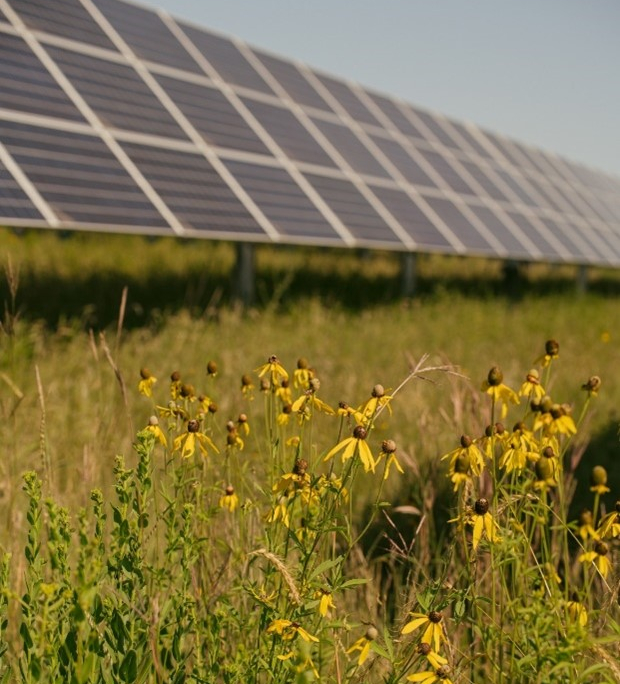
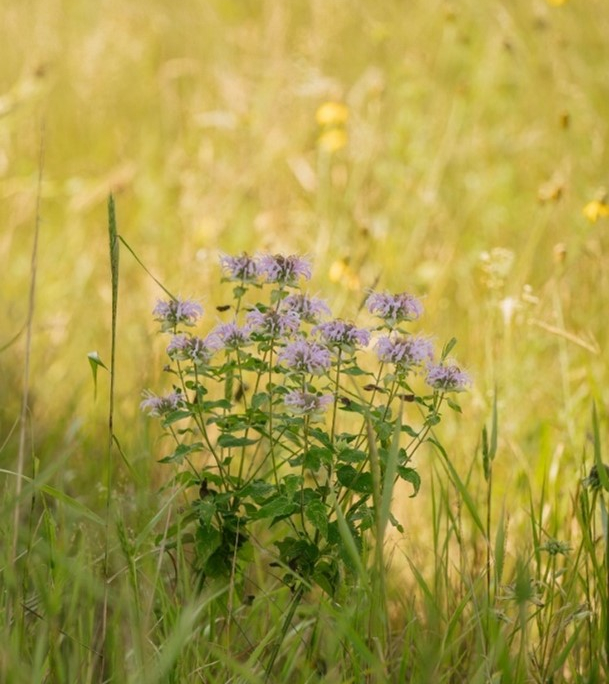
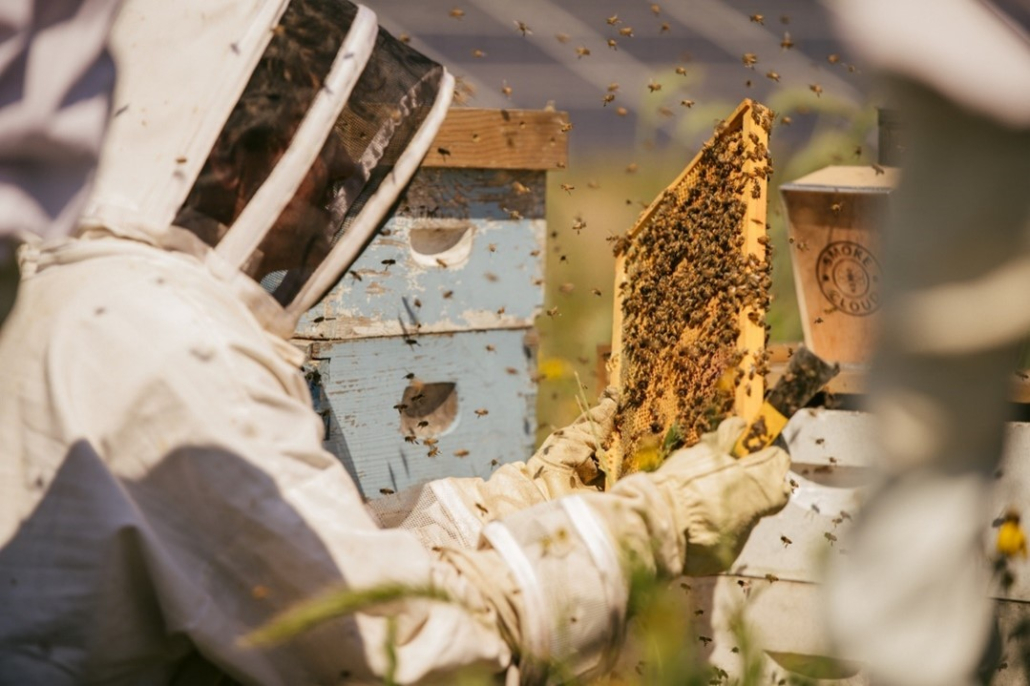
Lake Pulaski is not without maintenance needs. The enormity and complexity of the site requires technicians, plant experts, landscapers, and sheep farmers to ensure that the site function as designed. Enel Green Power does most of the technical maintenance, while MNL sprays and maintains the plants. The SolTech trackers require slightly more maintenance than pole trackers, and they can go offline due to storms, sheep knocking the sensors, and other natural causes. Background research is being conducted by ENEL to determine whether the tracking system is worth the extra maintenance. At the end of the site’s service life, which is typically 25 years, the developers hope to decommission the system and return the land to agriculture with richer soil than the gravel alternative and unharmed adjacent landscapes. The research from this site will help quantify the benefits that agrivoltaics can bring to both solar development and agriculture industries.
Solar Projects Increase Tax Revenue in North Carolina
“Proposed large-scale solar facilities continue to draw opposition in North Carolina from critics who argue that swaths of panels are blights on the landscape and threaten farms in a state where agriculture is the leading industry. But those facilities have become a financial boon to local communities, particularly in rural areas with limited sources of tax revenue, a newly released study from the N.C. Sustainable Energy Association found.” – Greensboro
Dutch Research Studies Agrisolar
“During a four-year pilot project, Dutch independent research organization TNO, in collaboration with Vattenfall and Aeres University of Applied Sciences (UAS), is developing a sun-tracking algorithm that monitors various factors, such as crop yield, energy yield and the effects of herb strips, weather forecast, energy price and soil condition.” – Vattenfall
Small Farms in Maine are Good Candidate for Agrivoltaics
“Maine’s prevalence of small farms with low-lying, hand-harvested crops makes the state a good candidate for blending solar energy and food production on the same land, but farmers may not take the risk without funding for pilot projects.
Maine may be uniquely positioned for this emerging field, known as agrivoltaics or dual-use solar. Nationally, most successful projects so far have involved extras like solar grazing or pollinator habitat alongside panels at small farms with low-lying, hand-harvested crops — precisely the type of farms that dominate much of Maine’s agricultural sector.” – Energy News
